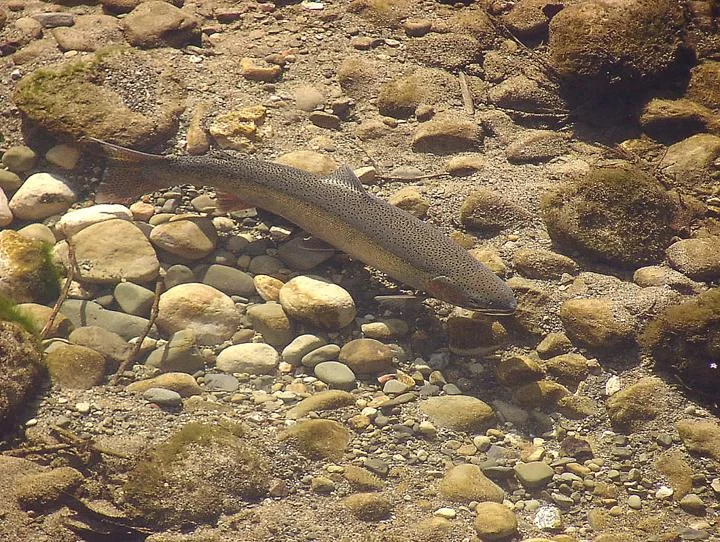This is dedicated to the hobbyist fish biologist in all of us. The more you know well... the more likely you are to have an eight fish day steelheading on the Ronde! In all seriousness though learning more about the biology and seasonal life-cylce of trout, steelhead, and salmon will make you a better angler. This knowledge also brings us closer to and more in-touch with these amazing animals and their compromised ecosystems as they make the long sacred journey home for the spawn every year. We sincerely hope the information presented through this page and the links here will help you in trip planning, but also in learning about and preserving our treasured fisheries and valuable freshwater resources.
Columbia Basin Dams Map (and abbreviations):
Another more comprehensive map is available here
Bonneville Dam (BON) , The Dalles (TDA) , John Day (JDA) , McNary (MCN) , Ice Harbor (IHR) , Lower Monumental (LMN) , Little Goose (LGS) , Lower Granite (LWG)
Using the Columbia River DART (Data Access in Real Time) system requires knowledge of the dam names and abbreviations; we have listed them to help make your DART access a bit easier. Keep in mind when using the links that fish must pass (upstream of) the Dalles Dam to access the Deschutes River system, John Day Dam to access the John Day and Umatilla systems, McNary Dam to access the Walla Walla system, and Lower Granite Dam to access to the upper Snake, Clearwater, Salmon, Grande Ronde, and Imnaha systems.
Main Columbia River DART (Data Access in Real Time) here: This is DART's home page and is a bit confusing, but none the less, offers almost limitless data if you dig.
DART Quick Look Passage is available here: This page as it gives a quick graphical overview of annual fish numbers bypassing dams organized by species. The color portion of the graph is the current year and the black line is the 10-year average. To see the marked months you'll have to scroll down to the bottom of a group of graphs.
DART Passage Daily Counts is available here: On this page you can select any dam, any date range, and get a passage summary and included a ten-year average! It is most useful (for our region) if you set the date range to start at June, that way last season's fish will not be included. Ten-year averages are the right most number in any species column.
DART Passage Daily Count for Lower Granite: This is the last dam fish have to pass before they are home free in our water! We have set the date range to report from June 1, 2015 to December 31, 2015. If you want to refresh for the latest numbers just click "update table" near the top of the page.
Our anadromous fish our an incredible natural resource, with a legacy stretching back for millennia. It is our duty as anglers and stewards of the fish and the rivers they call home to help preserve and protect these resources so they may thrive for millennia to come.

